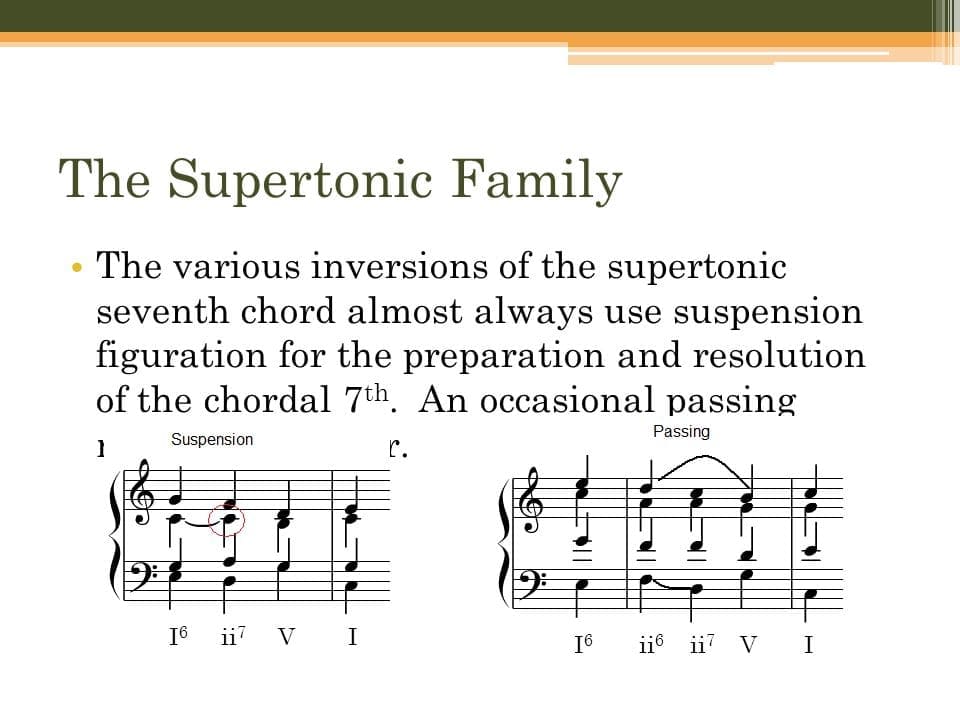The supertonic is an important component of music theory and an essential element of any musician’s repertoire. It is a chord that is a major second above the tonic chord and is used to create tension and interest in a song.
In this article, we will explore what a supertonic is, how it is used in music, and some tips for incorporating it into your own compositions. We will also discuss some of the most common supertonic chords, so you can begin to experiment with them in your own music.
What is a supertonic?
It refers to the supertonic scale degree two in a major or minor scale and is part of a set of names that assign each degree its own harmonic function.
From the tonic (1) to the leading tone (7), the other degrees are – supertonic (2), mediant (3), subdominant (4), dominant (5) and submediant (6).
Although these terms may seem complex, they can be extremely useful when understanding how notes work together harmonically. For example, it is essential for a dominant seventh chord to contain both the leading tone and the dominant as its root.
Why focus on the supertonic?
Once you give the scale degrees a name, see how they can sound as you write songs or produce tracks. The supertonic is a great example because of its unique quality as a melodic resting place that’s commonly used in modern pop songs.
It’s also the same scale degree as the 9th chord extension often heard in 9th chords from jazz and R&B and is the root note of the ii chords in major progressions such as ii-V-I. Identifying these situations will help you recognize how their function plays a role in the melody or harmonic progression.
Where can you use the supertonic?
Once you have the fundamentals down, there are several ways to incorporate the supertonic into your music.
Chord extension
For example, it can be used as a chord extension. When shifted up an octave, the 9th adds a pleasant and sophisticated sound without altering the original quality of the chord. This technique is frequently employed in jazz, gospel and R&B music styles; thus, it is essential to learn this harmonic vocabulary for these genres.
As a melodic centre
Popular in modern music, the supertonic is often used as a strong note in a melodic line. By shifting up an octave, it creates a smooth and sophisticated sound without altering the chord’s quality.
Recently there has been an inclination towards melodies that remain close to one or two notes over each chord progression; making the supertonic perfect for this purpose as it does not feel strongly connected to any particular chord.
As a chord root
The supertonic is an integral part of chord progressions that feature the ii chord. This is especially true in the classic ii-V-I progression. When voiced in the root position, it creates a strong sense of root motion, evident in jazz standards.
In minor keys, the ii7 takes on a different quality due to its inclusion of the b5 note from scale degree 6. As a result, this m7b5 chord can be heard in minor ii-V-i progressions like “Autumn Leaves”.
As a suspension
You may typically think of suspensions as only occurring between scale degrees 4-3. In early music, 2-1 (or 9-8) and 2-3 were also accepted as valid suspensions. If the song’s harmony is based on the tonic with the supertonic held over, these can offer an interesting twist.
Experimenting with supertonic
Experimenting with supertonic chords is a great way to add a unique flavour to your music. Start by playing a supertonic chord in the key of your song. You can then start to explore different variations of the chord. Do this by adding/subtracting notes or by changing the order of the notes.
You can also explore different inversions of the Supertonic chord to create interesting harmonic progressions. Once you have some ideas, try incorporating them into your own music. Add them to existing progressions or create new progressions that feature the supertonic chord.
With some practice, you can use supertonic chords to create unique and interesting sounds in your music.
Summary
Delve into the supertonic and you’ll find that it deserves special attention. From contemporary tunes to traditional jazz, this scale degree can be used in many ways. After reading this article, you should now have a good foundation for utilizing the supertonic.











